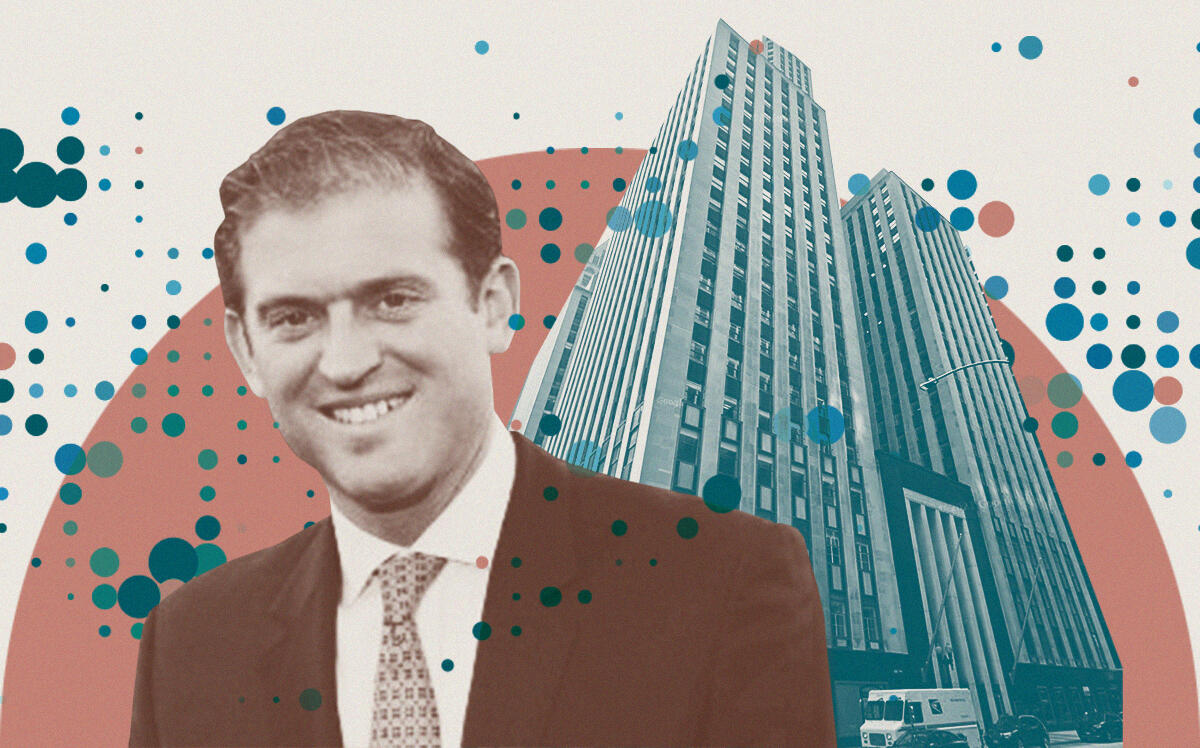Trending
Can AmTrust’s new president make aging office buildings cool?
Jonathan Bennett on facing down distress and turning around a hulking portfolio

Nobody wants aging office towers — including the people who run them.
When Jonathan Bennett arrived at AmTrust Realty as president last fall after a decade working for the Nakash family, he assumed responsibility for 12 million square feet of mostly boring, dated office buildings. Some are a quarter empty. Others are the cold, unwelcoming homes of government agencies. One, he discovered, has an untouched 1980s-era Bally Total Fitness on one of its upper floors, complete with squash courts and giant jacuzzis.
“You go up there and then you feel like you’re in one of those horror movies, because you have all the metal lockers that are still there,” said Bennett. “You think somebody’s going to jump out of one of those lockers and get you.”
But where some see a nightmare, Bennett sees possibility.
“There’s a real opportunity to reimagine that space and do something very special with it,” he said.
Realizing those types of opportunities won’t be easy. AmTrust owns seven office buildings in downtown Chicago and two in Manhattan, some of which are already facing distress. It’s working to avoid losing its office tower at 135 South LaSalle Street in Chicago. AmTrust’s largest tenant at One Illinois Center, insurer CNO Financial Group, is leaving behind nearly 140,000 square feet. And at 250 Broadway in Lower Manhattan, it’s tasked with filling seven floors left behind by a city agency.
Shortly after Bennett took over, AmTrust announced plans to spend $100 million to renovate much of its Chicago portfolio. Bennett now says it will end up costing much more than that. With the blessing of Amtrust’s billionaire backers, the Karfunkel family, he’s also looking at new markets, acquiring multifamily properties and maybe even some trophy assets.
Bennett is an optimist, but also a realist. Attracting tech companies or financial firms is going to require serious chutzpah. The Real Deal caught up with him at AmTrust’s office in Lower Manhattan to understand his game plan.
Have you found a replacement for CNO Financial at One Illinois Center?
We’re reimagining that entire building. And yes, while we are actively leasing, I would say stay tuned.
We’re looking at that building from a totally different perspective. I discovered — this is super cool — on the top floor of the building, there was an abandoned old Bally’s with double-height ceilings, and there are five squash courts up there. There’s saunas, there are jacuzzis. And so there’s a real opportunity to reimagine that space and do something very special with it. In addition to that, we are running a process to select a food and beverage operator that’s going to activate the lobby. It’s a 2 million-square-foot building. It’s two buildings that are connected, and we connected it before I got here. [AmTrust] connected it with a lobby, which was a $25 million project.
What’s going on with the LaSalle Street property? Reports indicate that you will hand it over through a deed in lieu of foreclosure.
We’re working with a special servicer. We manage the building. So we have an awareness of our fiduciary obligation to make sure that we’re managing the building professionally. Something was released recently, a plan to revitalize the LaSalle Street corridor. A lot of which I think is rehashed, talking about closing part of LaSalle to cars and creating a pedestrian thoroughfare, talking about different lighting schemes, talking about conversions and making it easy to convert these buildings to other uses. So we are working together with them, and so far I think it’s been a positive partnership from that perspective. But nothing as it relates to deed in lieu, none of that has happened.
Is there a possibility that you still keep the property?
I think there is.
In 2019, AmTrust was looking to sell its Chicago office portfolio for around $1 billion. What’s the plan now?
My plan is to renovate the buildings, lease them up and set them up for the future. And then we can talk about capital strategy or asset management strategy as it relates to financing or selling. I think there’s a potential that we would prune the portfolio. I am not a big seller of real estate in general. The [Karfunkel] family isn’t either. The family has always been long-term capital and, like a lot of wealthy families, that’s why they invest in real estate.
So the company is definitely evolving in terms of where we’re putting new capital as well. That also affects the way that we think about the market in Chicago.
How so?
Meaning once upon a time, [AmTrust] went all-in on Chicago and all-in on the Chicago office. The person that used to sit in my chair was an office leasing guy. That was his asset class. I would [imagine] that he bought what he knew. That’s what people tend to do.
I’m more of a generalist. Certainly, the 11 years I spent working for the Nakash family, I went all over the country, I bought every type of asset class. We invested in hotels, in retail and multifamily and office and industrial. And we were agnostic to geography. It was more about being opportunistic. We were in Miami before anybody was talking about Miami. I bought the Versace mansion in 2010 or ’11. People were like, “Why are you doing that?” Now everybody gets it. So because I’m more of a generalist, when I popped in here, [I said], “We don’t have to just be an office company. We can invest in all the other asset classes and diversify a little bit.”
Are the buildings in Chicago attractive right now enough to secure leases?
We need to do the work. We need to do the work.
You mentioned conversions, but is that realistic? When you break down the numbers, especially in New York, it’s very difficult.
It’s definitely complicated. You need the zoning. You need the leases rolling. So you need an empty building. Obviously the big issue always is with the office buildings and the big floor plates… But like everything, if you have the right basis, you can pencil it out when you’re done.
What new asset classes are you looking at?
I’d like to see the portfolio more diversified, although we’re still looking at a lot of office deals. Everybody knows the Warren Buffett quote… “Be fearful when others are greedy and greedy when others are fearful.” So everybody’s scared of the office market today. That’s probably the right time to be looking for opportunities. Now, what do those opportunities look like? I think it always comes back to basis. So if you can buy something at a super value and you’ve got a business plan that you think works, then you probably should be doing that. And it probably should feel a little bit uncomfortable when you’re doing it.
Is there anything else you have your eye on in New York?
I bid on that deal right behind you 8 Spruce [Street, previously known as the New York by Gehry]. I think that traded at just under a 5 [percent] cap. (Blackstone bought the 76-story building from Brookfield Asset Management and Nuveen in December for $930 million). So I’ve looked at office deals down here. And I’ve looked at conversion opportunities down here as well.
I want to be in the business of people looking at my building and saying, “This place is fantastic.” And of course cost matters, but cost is the second part of the conversation. The first part of the conversation is, “This is a fantastic place — what do I need to do to be here?”
So that’s your goal?
That’s how I look at all these assets. The market’s very sophisticated and again, it’s not quite the way that it has been in the past. There were periods of time where you felt like if you’re in business, you had to be in the [Central Business District] and you had to be in a big building somewhere, otherwise you’re not in business.
Not quite the same thing anymore. Once you become a certain size, yes, you do need to be there. But these smaller businesses, I don’t know enough about those super small leases that are going to [Class] B buildings with no amenities. I don’t think there’s a tremendous amount of activity there. I certainly am not seeing it. I’m seeing activity for larger companies.
They have the opportunity to go to a better building. Because there’s definitely an amenities war. And it started years ago. And if I can pay the same or a little bit more to be in that building that’s going to be a lot better experience, why shouldn’t I go there?
Are sellers relenting on prices?
I think that there’s for sure a 15 to 20 percent discount in the market today versus six months ago, just based on interest rates.
If somebody has a loan that’s coming due now, what are they going to do if they can’t refinance? I continue to look where the debt might not be coming due today, but where the debt might be coming due in the next couple of years and they want to do the prudent thing probably for their investors. I think that interest rates have gone up, may go up a little bit more, but three years from now, I think we’re going to be in a much better place. And that’s why this is a really interesting time to be doing this type of work.




